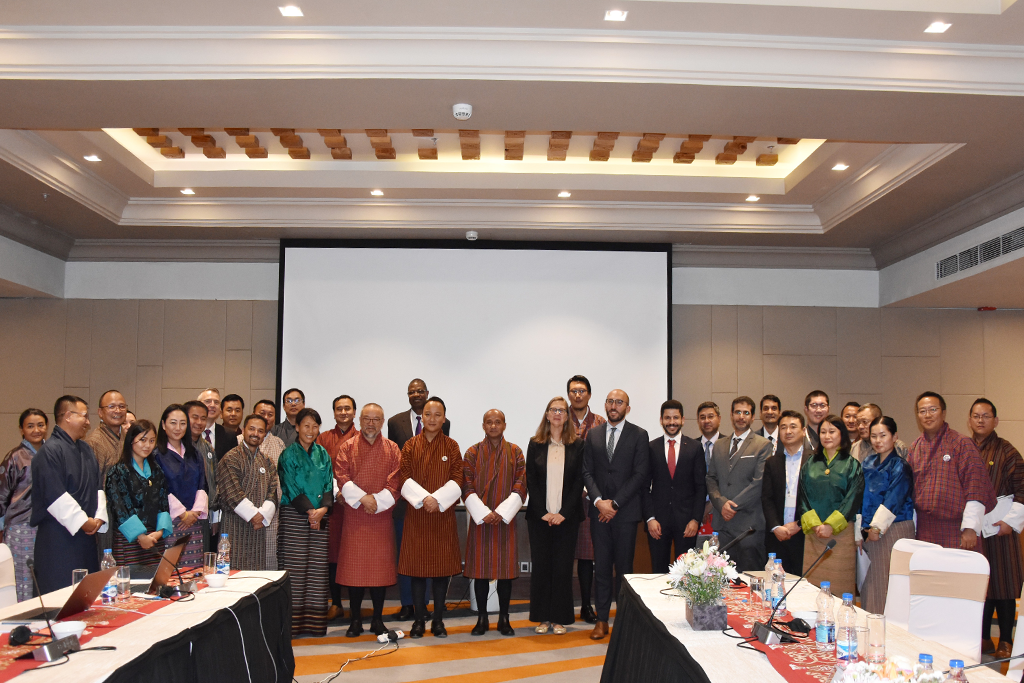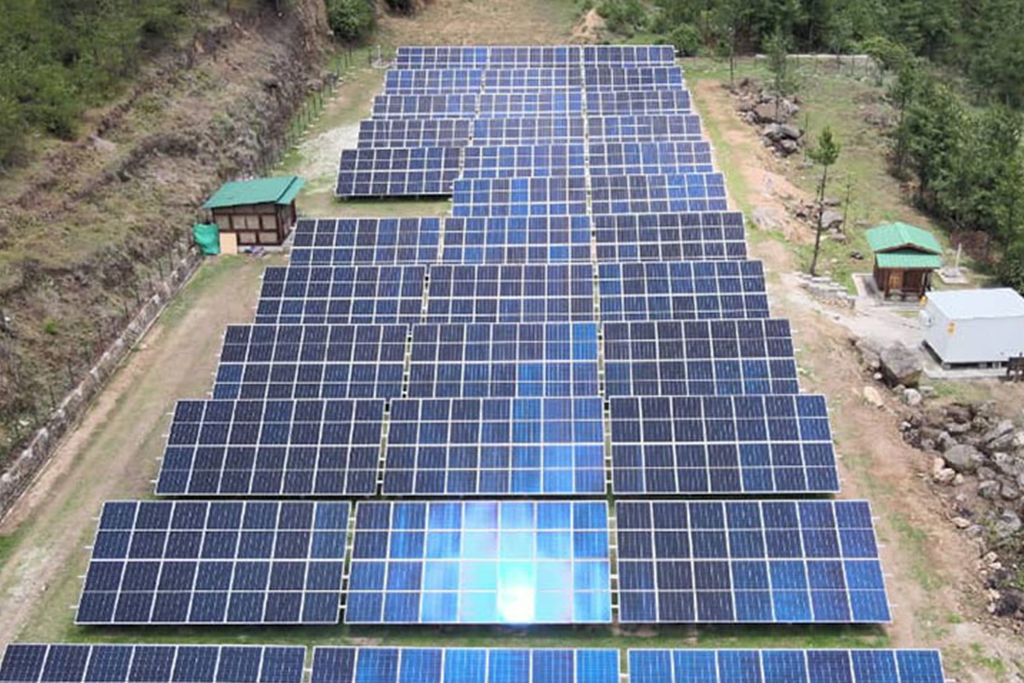The Bhutanese | Tenzing Lamsang | June 17, 2023
An eight-member expert committee had been set up by Bhutan and the Government of India (GoI) as a final attempt to reach a solution on the 1,200 MW Punatsangchu-I project.
After delays, the committee had got an extension until June 2023 and they are supposed to submit a report soon.
However, according to a reliable source despite the several presentations and talks there was no common ground reached in the last discussions held in Delhi earlier this month among this group.
The 4 experts from India stuck to the earlier position of saying it is safe enough to build a dam on the current site while the Bhutanese side did not agree and pressed for the cheaper barrage idea.
The experts from the Indian side says there there is no danger and movement of the right bank hill has subsided. They say the shear zone has come to the surface and is not deep rooted and can be fixed using piles and the dam can also be made on piles. Piles are essentially giant concrete nails driven into the mountain side to secure it.
They are insisting on the dam and saying no to the barrage and are asking why it even came up.
The Indian experts also feel that an S shaped stilling basin can be built which is not done in other places. A stilling basin absorbs the energy of the water as it leaves the dam to prevent erosion.
The Bhutanese side does not feel it is safe so they cannot move ahead with these kinds of assumptions.
The worry for the Bhutanese side is not only the right bank hill but also the hill settlement and Bjimithangka colony above where there is some disturbance on the road side and movement with cracks above the road.
While the Indian side say the movement has subsided on the right bank, but that is probably because there is no work and digging going on below.
Sources from the field say that the inclinometers put to give reading of any movement still show that there is some internal movement on the slope.
This makes the dam site still very vulnerable.
The Indian experts, who are mainly relying on the advice of the P-I lead consultant WAPCOS, say the dam can be built at certain angles and with piles underneath securing the base and piles driven into the right bank to pin the slide areas.
However, the Bhutanese side would not be okay with this as a lot of piles driven into the right bank in the past at huge cost had failed spectacularly twice and had failed to arrest the slide. None of the piles are functional and most of them are lost. More so as it was done under the guidance of the same consultant WAPCOS.
The Indian side is being guided by the WAPCOS under whose watch the entire problem of the right bank unfolded with failed mitigation measures but WAPCOS still has not changed its stance saying that the dam is possible.
The biggest worry for the Bhutanese side is that once the dam is built and there is a problem then it would also wipe out the P-II project downstream and the future Sunkosh project and this huge wall of water would lead to loss of human settlements and lives in both Bhutan and India downstream. The Bhutanese side is unwilling to take that risk.
The Indian experts have argued that the barrage will be impacted during an earthquake, but the Bhutanese side is confident there is a technology that can be used during construction take make it secure.
Stucky, the DGPC hired third party consultant, did many presentations on the barrage and are very sure the barrage can be done and they can manage it, but the other side is not even considering it.
The Bhutanese side feels that the piles will mean an additional Nu 25 to 30 bn in construction costs when already around Nu 24 to 25 bn has been spent at the dam site. With no agreement from both sides it is unlikely that the final report will have any solution with the deadline to submit the report being this month.
Way forward?
Once the report comes in the government will have to think of the way forward for the project.
One way forward could be Bhutan insisting the dam is not safe and going with the barrage.
If the Indian experts and WAPCOS insists on the dam, then another option is going for a legally executable agreement which asks by when they will finish and if they do not finish then they start paying Bhutan the revenue the project is supposed to earn.
Also, if anything happens to the dam within the lifespan of the dam then they will bear all the accountability and responsibility and if anything happens to the other things like the hill and other projects then they will also have to bear the responsibility.
One option is for Bhutan to look for the top up money and go for the barrage.
If nothing works, and the barrage is not agreed to then the project may have to be suspended.
With the technical experts looking like they cannot come up with a solution then another option would be to escalate the matter to the diplomatic and political level where the leadership of both countries take a decision.
The worse case scenario is for the project to be completely abandoned and in that scenario a big question will be on what about the money already spent so far.
So far more than Nu 83 bn has been spent on the project, but in case the project is abandoned it will have to be dealt differently and diplomatically as the fund is for the project and not for either government. The funds, in short, may have to sink with the project.
The minister for Energy and Natural Resources Loknath Sharma in the past had assured that this project would be sorted out before he leaves office but that looks unsure now with how things are playing out.
However, while things are not going well an official said that the P-I project is too important for both sides to not be able to agree or to be left like that and the official said both sides are consulting and working hard to come up with a solution.
A clue to the whole problem is in the traditional name ‘Bjimithangka’ which means a place with a lot of sand.
Background
The problem all started in 2008 when the then PHPA MD R.N Khazanchi proposed to change the original dam site to generate more power. The then cabinet agreed in June 2008 based on Khazanchi’s presentation.
A Joint Audit Report of the Royal Audit Authority (RAA) of Bhutan and the Comptroller General Audit of India (CAG) of 2012-13 said that the PHPA, its main consultant WAPCOS and CWC knew that there were geological weaknesses at the right bank area but still went ahead with the tendering of the dam on the same site in 2009.
Instead of conducting further investigations PHPA’s overall consultant WAPCOS, on behalf of GSI, issued a clearance for the project dam bids to be opened on 16th February 2009.
The problem made itself known with a major slide on the right bank in July 2013 which at the time the overall consultant WAPCOS and the civil consultant CWC said could be fixed with Nu 3.5 bn of mitigation measures which included concrete piles. However, despite the measures another major slide happened in August 2016 and again despite additional mitigation measures of more concrete piles and other measures the same area slid on 22nd January 2019. A total of Nu 4.85 bn spent on mitigation measures had failed.
After this, the government in the 21st PHPA Authority meeting in January 2019 insisted to the Indian consultants to come up with a comprehensive solution.
CWC was tasked to come up with a holistic solution to strengthen the Right Bank without which construction of the Dam on the right bank side could not proceed. The report was submitted by CWC on 1st October 2019 and detailed drawings later in December of the same year.
One suggestion of the CWC was that the dam on the right bank side be constructed over 288 concrete piles driven into the ground to avoid excavating the shear zone below the right bank side
The Bhutanese side not very convinced with the idea of concrete piles under the dam for the long term and feeling the need for an overall review of CWC’s proposal called for a review in the Technical Coordination Committee meeting
The National Hydro Power Corporation (NHPC) was then called upon to do a third party review of the WAPCOS and CWC proposal.
The NHPC in mid 2020 presented its review of the CWC report as a third party and disagreed with the CWC assessment and said the factor of safety is below 1 and hence it is not safe enough to build a dam.
The NHPC instead recommended to build a smaller structure in the form of a barrage 820 meters upstream of the current site.
The project authority asked the two companies with different findings to reconcile their contradictory findings. The two companies came back giving a factor of safety of 1.4 safe enough for a dam.
However, this calls into question how the NHPC drastically changed its own stance and data to fit in with the CWC.
The government through DGPC had hired a foreign company Stucky to do a review of the review which also showed the current site to be unsafe with a recommendation for a barrage.
If the dam is abandoned of the Nu 23 bn spent on it around half of the cost in other structures like the 4 large de-silting chambers and around 11 km of tunnels can be reused for the barrage.










